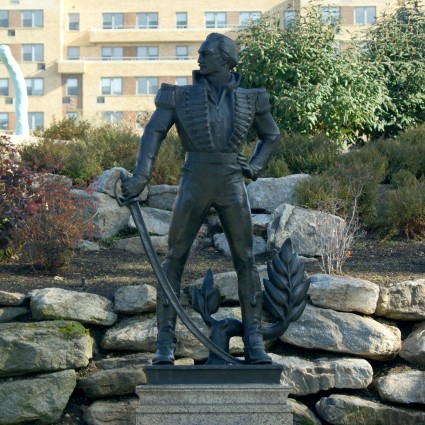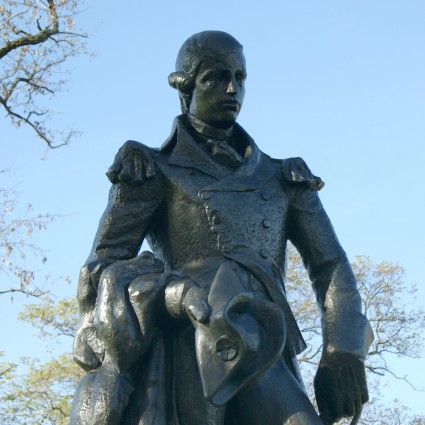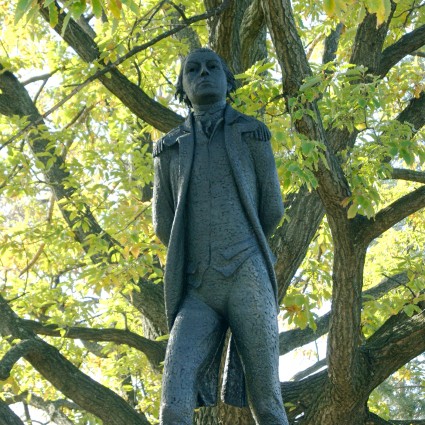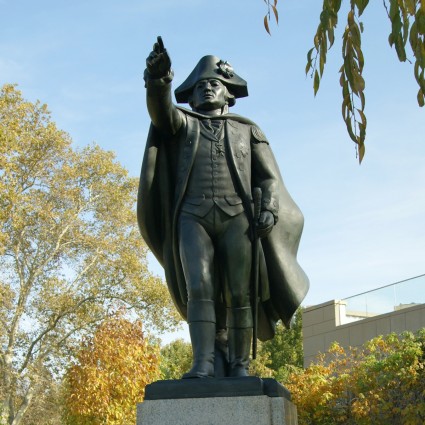At A Glance
Commissioned as part of the William M. Reilly Memorial
Marquis de Lafayette was the most famous of the foreign volunteers in the American Revolutionary War
Artist Raul Josset created war memorials throughout France after World War I and became well known for his monumental sculptures
The most famous of the foreign volunteers in the Revolutionary War was the Marquis de Lafayette, a French nobleman who sailed for America at the age of 20 to offer his military services free of charge. Commissioned a major general, he joined Washington’s staff and took part in the Battle of Brandywine, the long winter at Valley Forge, and the campaign of Rhode Island.
As specified in the will, these first four sculptures commemorated Montgomery, Pulaski, von Steuben, and Lafayette, volunteers from other lands who “threw themselves into the cause of emancipating the colonies from the yoke of British tyranny.”
After a brief return to France, he helped to defeat General Cornwallis in Virginia. In later years the new nation showed its gratitude by granting him large tracts of land in Louisiana and Florida. Commissioned as part of the William M. Reilly Memorial, the flamboyant Lafayette is portrayed in a dynamic pose by Raul Josset. Though born in New York, Jousset was educated in Paris, and in the aftermath of World War I he created war memorials throughout France. He became well known for his monumental sculptures at the Chicago World’s Fair (1933) and the Texas Centennial Exposition (1936).
William M. Reilly Memorial
In his will of 1890, General William M. Reilly of the Pennsylvania National Guard established a trust fund for the purpose of creating monuments to American Revolutionary War heroes. The earnings were to accumulate until the fund became large enough for the memorial to be realized. In 1938, when the fund reached the necessary level, the trustees set the project in motion, and four bronze statues were installed by 1947. Although Reilly had requested a site near Independence Hall, the larger-than-life figures were placed instead on the terrace northwest of the Art Museum. C. Louis Borie, Jr., one of the architects of the museum itself, designed the granite bases.
As specified in the will, these first four sculptures commemorated Montgomery, Pulaski, von Steuben, and Lafayette, volunteers from other lands who “threw themselves into the cause of emancipating the colonies from the yoke of British tyranny.” In addition to honoring their achievements, General Reilly wrote, the memorial would express “appreciation and gratitude to the lands which gave these liberty-loving men their birth.”
By the terms of the will, funds remaining after the erection of the four original monuments were to be applied to other statues of Revolutionary heroes. Accordingly the trustees commissioned bronze figures of John Paul Jones and Nathanael Greene, which were installed in 1957 and 1961, respectively. The six sculptures are arranged in two facing rows.
Adapted from Public Art in Philadelphia by Penny Balkin Bach (Temple University Press, Philadelphia, 1992).
RESOURCES



